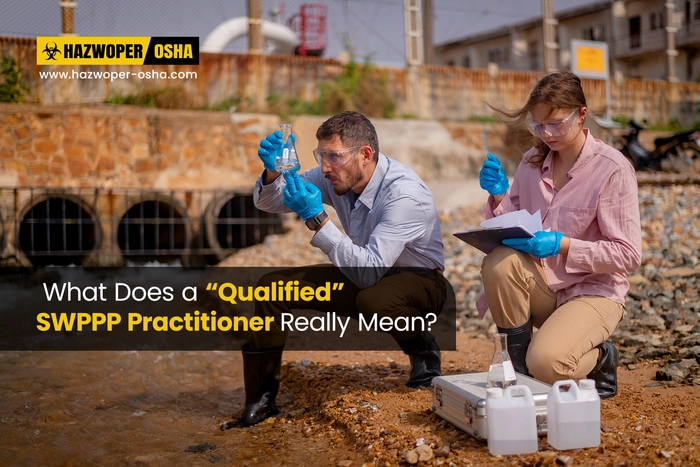Lithium Batteries Shipping Calls for Added Precautions!

Introduction
In today’s modern world, we all have an everyday association with lithium batteries. Lithium batteries power a range of rechargeable devices such as cellphones, laptops, watches, and even vehicles.
What is a lithium battery? It is a rechargeable battery that uses lithium ions for storing energy and has a higher energy density and lower self-discharge rate compared to other types of batteries. This makes lithium batteries a popular choice to power modern electronics.
While lithium battery usage is popular and becoming more so day by day, there are various safety concerns linked to them as they contain flammable electrolytes inside. Yes, the lithium batteries found in our portable electronic devices can be life-threatening, if mishandled and misused. And its usage popularity increases the safety and health risks for workers handling lithium battery shipments.
To reduce such risks and minimize worker hazard exposure, those who ship lithium batteries must be aware of, and put into practice, the U.S. Department of Transportation’s regulatory requirements as detailed in the Hazardous Materials Regulations (HMR). This will require workers to be trained on safe practices to ensure the safer transportation of lithium batteries by air, highway, rail, and water.
In this article, we will discuss how to safely ship lithium batteries to eliminate or minimize prevailing hazards.
Did You Know?
The devices containing lithium batteries are classified as dangerous goods and require specific packaging, labeling, marking, and shipping regulations.
Important Considerations When Shipping Lithium Batteries
Various regulatory bodies have created rules and regulations to be followed before lithium batteries are shipped. Non-compliance with these rules and regulations could lead to fines and penalties for the organization but may have more serious impacts on employee safety and contamination of the natural environment. Therefore, during transportation, ensure lithium batteries are correctly declared, stored, labeled, and packaged. Personnel involved in the shipping process must have adequate knowledge and training for the proper handling of lithium batteries.
Let’s better understand these rules and regulations for the safe handling of lithium battery shipments.
Rule# 1: Choose the Right Shipping Company
Be mindful that the shipping company you choose to transport lithium batteries has in place the necessary knowledge and any certifications, as relevant. Lithium batteries may catch fire, burst, or leak while being shipped, hence they are subject to specific regulations. Lithium batteries that are damaged or old and being discarded or recycled also have a set of regulations to be complied with.
For instance, the DOT HMR covers all modes of transportation for lithium battery shipments. Maritime shipment of lithium batteries is further regulated by the International Maritime Organization (IMO)’s International Maritime Dangerous Goods (IMDG) Code, while the International Air Transport Association’s (IATA) Dangerous Goods Regulations (DGR) regulates lithium batteries shipped by air.
These regulations ensure that lithium batteries are safely shipped by guiding shippers and carriers on implementing appropriate packaging, labeling, marking, loading, unloading, and handling processes.
Before lithium batteries are shipped, it is important to identify a reputable carrier following and complying with the regulations as set out by the DOT HMR, IATA DGR, and the LMDG Code.
Remember! Check that employees of these carriers are also properly trained to correctly handle lithium battery shipments as per regulations.
Rule# 2: Label and Mark the Shipment Appropriately
Often, shipping companies provide the shipper with a Shipping Guide mentioning the specific requirements for labeling lithium batteries shipments as per regulations under the relevant mode of transport used for shipment, i.e., highway, rail, air, or water.
Mitigating the health and safety risks associated with the transportation of lithium batteries requires the right labeling and marking of lithium battery shipments. Two factors must be adhered to while labeling lithium batteries for transportation:
1. Proper Classification: We already know that lithium batteries are hazardous materials therefore, it is mandatory to specifically label them as hazardous while shipping them. Lithium batteries are further classified depending on battery type and watt-hour rating. The details are given in the relevant regulations such as the DOT Hazardous Materials Regulations.
For more information on identifying and classifying lithium batteries, read our blog - The Dos and Don’ts of Shipping Lithium Batteries
2. Relevant Marking: Lithium batteries are categorized as lithium ion batteries and lithium metal batteries. The United Nations Committee of Experts has classified lithium batteries into six types, assigning specific UN Numbers and proper shipping names to each type.
Every lithium battery transported must be marked as per its respective shipping name and the UN number.
| S.No | UN Number | Shipping Name |
|---|---|---|
| 1 | UN 3480 | Lithium-ion batteries (rechargeable) |
| 2 | UN 3481 | Lithium-ion batteries contained in equipment |
| 3 | UN 3481 | Lithium-ion batteries packed with equipment |
| 4 | UN 3090 | Lithium metal batteries (non-rechargeable lithium batteries) |
| 5 | UN 3091 | Lithium metal batteries contained in equipment |
| 6 | UN 3091 | Lithium metal batteries packed with equipment |
Rule# 3: Run Relevant Tests Accurately
Prior to lithium batteries shipping, the producers and distributors of lithium batteries must provide the shipping company with a Test Summary Report (TSR) as per the requirement of the United Nations (UN) Manual of Tests and Criteria, Section 38.3, Effective January 21, 2022. Without the availability of the TSR, shipping lithium batteries are prohibited.
The UN 38.3 has set out 6 tests for assessing the safety of lithium batteries during transportation. These include:
- Altitude simulations
- Thermal test
- Vibration test
- Shock test
- External short-circuit test
- Overcharge test
The UN 38.3 tests are designed to evaluate the condition and stability of lithium batteries to reduce the risks during their shipment. All test results must be documented and made available to the shipping company and other relevant parties. Lithium batteries must pass the UN 38.3 tests in order to be shipped by any mode of transport.
Rule# 4: Packaging of the Shipment
The United Nations recommendations for the road, rail, air, sea, or multi-modal transportation of dangerous goods are in line with the regulations as set out by the International Civil Aviation Organization (ICAO), IATA, IMO, and the U.S DOT.
According to these regulations, each lithium battery should be packed separately to prevent short circuits and damage. Foam, bubble wrap, or other types of recommended protective packaging must be used to protect the batteries from damage. The packaging should be strong enough to prevent crushing and withstand normal handling.
Recent regulatory changes continue to support safer lithium battery shipping practices. Most notably, the International Civil Aviation Organization (ICAO) has widened the 30% state of charge (SoC) limitation to lithium-ion batteries shipped with equipment, starting January 1, 2026. Previously, this was only applicable to single lithium-ion batteries. This shift requires lithium-ion batteries supplied with equipment to also be at or below a 30% SoC when being shipped by air to minimize fire hazards and ensure safer flights.
Note: Testing is done before shipment to ensure that the batteries will remain protected if dropped, stacked, or accidentally exposed to moisture and other variables.
What if the Regulations are not Complied With?
To ensure the health and safety of employees, property, and the environment, authorities have developed regulations for the safe shipment of lithium batteries. These regulations must be followed by all shipping companies, airline and vessel operators, as well as railway companies and trucks and other vehicles transporting lithium batteries in commerce.
Non-compliance with regulatory guidelines will result in the shipment being rejected by the shipper/carrier. Mis-declaration of goods or violating regulatory guidelines would result in penalties, discredit amongst peers, or lawsuits, while increasing employee health risks and negatively impacting the reputation of the business. In addition, non-compliance with safety regulations can be fatal causing explosions, air crashes, and other accidents leading to far-reaching negative impacts and gravely undermining the lithium battery safety procedures and regulations.
Training to Support Employer Compliance
It is mandatory for employers and employees involved in any aspect of shipping lithium batteries to obtain appropriate safety training to be aware of the safe handling of lithium batteries and comply with the regulatory requirements while increasing safety and health at the workplace and during transportation.
Our DOT, IATA, and IMDG Shipping Lithium Batteries training courses cover the training requirements as set forth by the DOT HMR, IATA DGR, and IMDG Code. We offer comprehensive 10-hour training for shipping lithium batteries covering both regulated and except lithium batteries, as well as training that covers each of these types of lithium battery shipments separately.
Our 1-hour Lithium Batteries Awareness Training course is ideal for the general public to increase their awareness of the hazards associated with using and handling lithium batteries.
References
- Code of Federal Regulation (CFR). (n.d.). Transportation. Website. https://www.ecfr.gov/current/title-49/subtitle-B/chapter-I/subchapter-C
- International Air Transport Association (IATA). (n.d.). Dangerous Goods Regulations. Website. https://www.iata.org/en/publications/dgr/
- International Air Transport Association (IATA). (n.d.). Lithium Batteries. Website. https://www.iata.org/en/programs/cargo/dgr/lithium-batteries/
- International Air Transport Association (IATA). (2020). Transport of Lithium Metal and Lithium Ion Batteries. Website. https://www.iata.org/contentassets/05e6d8742b0047259bf3a700bc9d42b9/lithium-battery-guidance-document-2020.pdf
- International Maritime Organization (IMO), (n.d.). The International Maritime Dangerous Goods (IMDG) Code. Website. https://www.imo.org/en/OurWork/Safety/Pages/DangerousGoods-default.aspx
- U.S. Department of Transportation, Pipeline and Hazardous Materials Safety Administration. (Revised September 2021). Lithium Battery Guide for Shippers [PDF]. Website. https://www.phmsa.dot.gov/sites/phmsa.dot.gov/files/2021-09/Lithium-Battery-Guide.pdf

 EN |
EN |  ES
ES






























































































































